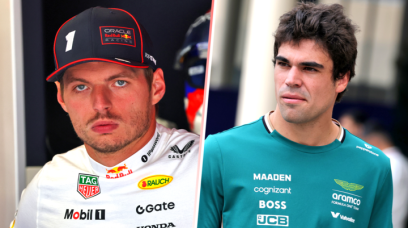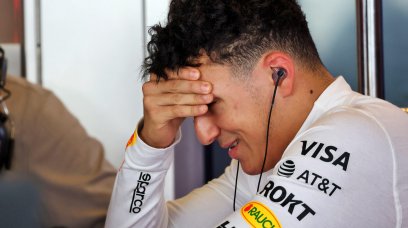Max Verstappen had just secured the lead at the British Grand Prix when things went completely wrong for him on the thirteenth lap of the race. A piece of debris from an AlphaTauri car caused extensive damage to his car, and it was the floor of the RB18 that was the big casualty. With the floor being the area of the car affected, it was not possible to see how bad the damage was to the reigning World Champion's Red Bull. However, as it was the rear section of the floor that was damaged and as such affected the handling of the car, that means it was serious.
Multiple factors involved
When a part of the floor breaks, it often affects the car's behaviour in a negative way. However, how bad the impact of the damage is depends on a number of different parameters. It depends not only on how severe the damage is, but also where on the floor the damage was done. We can assume that the damage suffered by Verstappen was inflicted on one of the so-called Venturi channels just in front of the rear axle of the RB18. These channels under the floor of today's cars generate most of the downforce of an F1 car using the so-called ground effect.
30 'points' of aerodynamics lost
This area of the floor is hugely sensitive from an aerodynamic point of view, as it is where most of the downforce load is generated. This point on the 2022 cars is where the cars are closest to the ground, so it provides a lot of downforce. If a part of the floor becomes damaged in that area, up to 30 'points' of aerodynamic load can be lost. That equates to more than a second loss in performance per lap. The damage to Verstappen was therefore clearly considerable, as he could not even match the lap times of Lando Norris and Fernando Alonso. Damage to one of the Venturi ducts can cause airflows to suddenly become very turbulent. The ground effect, which sucks the F1 car into the ground and makes it go faster through corners, is then drastically reduced.
Damage on one side
The fact that a Venturi duct was only damaged on one side of the floor was noticeable to Verstappen. He had the feeling that there was something wrong with only one side of his car. Verstappen even thought he had a puncture at first, as his RB18 felt unstable on one side when steering. While we will probably never know exactly how much performance Verstappen lost as a result of the damage to his car, it is clear that the damage can quickly cause a chain reaction. Not only stability, but also tyre wear can be affected by the imbalance between the two sides of the Red Bull car. All in all, it was a fine performance by Verstappen to keep the other drivers behind in the closing stages of the race.
Most read






